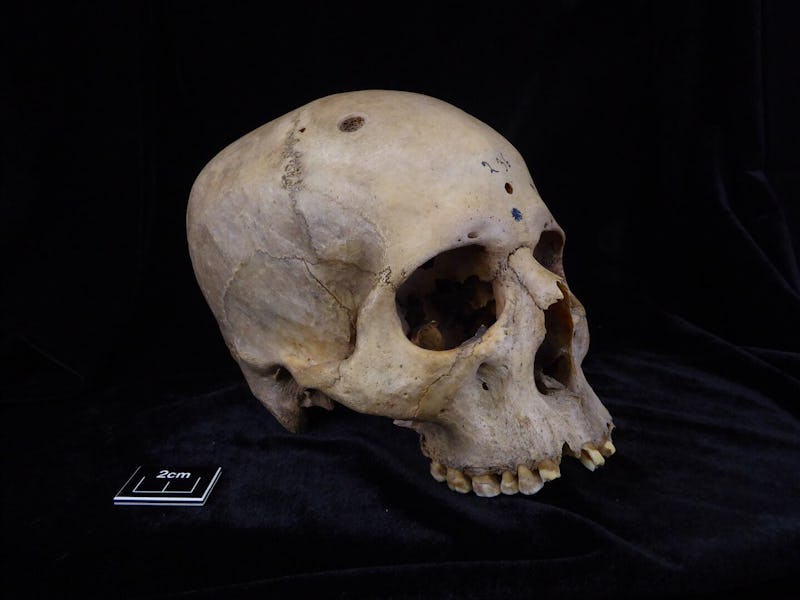This Ancient Egyptian Skull Could Be the First Evidence of Cancer Treatment
Skull 236 might bear the marks of our first foray into oncological medicine.

Artifacts demonstrate that ancient Egyptians had a solid understanding of medicine. The people of this civilization provided modern society with such medical bangers as the Edwin Smith papyrus from between 2500 and 1600 BCE, which contains the oldest known document on spinal injuries and other conditions, and the Kahun papyri from between 2100 and 1900 BCE, which includes the oldest known document on gynecology.
It’s no shock that Egyptians studied spines and vaginas, but it may come as a surprise that they also investigated cancer. Often thought of as a modern malady, cancer indeed afflicted humans long before we could conceive of its biological mechanisms. And there’s even evidence that people were performing surgical procedures on cancerous tumors in one of the earliest instances of oncological medicine.
A new paper published today in the journal Frontiers describes evidence from over 4,000 years ago that shows humans were conducting surgery to better understand this malignant disease. The authors from Germany, Spain, and the United Kingdom present their findings from analysis of two skulls preserved at the University of Cambridge.
Skull E270, dating from between 663 and 343 BCE, belonged to a female individual who at least 50.
One skull, dubbed E270, comes from ancient Egypt’s late period between 664 and 343 BCE. Once belonging to a woman aged at least 50 years old, this skull shows evidence of a tumor as well as several healed injuries. The other skull, known as 236, comes from a 30- or 35-year-old man from the Old Kingdom between 2687 and 2345 BCE who also suffered from a malignant cancer, specifically a nasopharyngeal carcinoma as the authors determined, that metastasized. But the most interesting aspect of Skull 236 is a bevy of tiny cut marks scoring the area around the tumor lesions, indicating surgical exploration. This is evidence that ancient humans recognized cancer in bone and attempted to excise it — or at least, investigate it.
“People tend to think it's a modern disease,” says the paper’s lead author Edgard Camarós, a paleopathology researcher at the University of Santiago de Compostela in Spain. “This also shows that the prevalence of cancer was something that could be observed in the past.” Here was evidence of cancer from more than 4,000 years ago, and an instance of how people tried to approach it. “It's like we've just broken this paradigm on paleo-oncology.”
The team analyzed these skulls using micro-CT scans. This method allowed for precise measurement of the scores and lesions visible on these skulls, which aided in detecting and diagnosing pathological conditions.
Several of the metastatic lesions on Skull 236 display cutmarks.
Camarós says that as far as we know, Skull 236 is the oldest evidence we have of people investigating cancer in other humans by medical intervention. Still, many questions surround this relic. We don’t know, for instance, if this surgery was definitely an attempt at cancer treatment while the man was still alive, or if it was during an autopsy. The team also couldn’t conclude decisively what the cause of death was for these individuals, though the advanced stage of these cancers “suggests a potential link to mortality,” the paper reads.
Cutmarks found on Skull 236.
The quality of these cut marks convinces Camarós that this is an intentional surgical intervention. “What we see is the shadow, left in the bone, of that tumor,” he says of the metastases. The direction of the score marks around this lesion show they were cutting at some soft tissue that filled this hole at one point.
The next step following this finding is to look for even earlier instances of cancer in Egyptian civilization. “We should go back in time,” Camarós says. He believes that people were reckoning with cancer long before this instance. “Our aim is to go as far as we can in time to try to understand how humans dealt with this disease that has been with us since the very beginning of time.”
In other words, he says, this discovery is merely a clue that could lead to an even more ancient medical breakthrough.